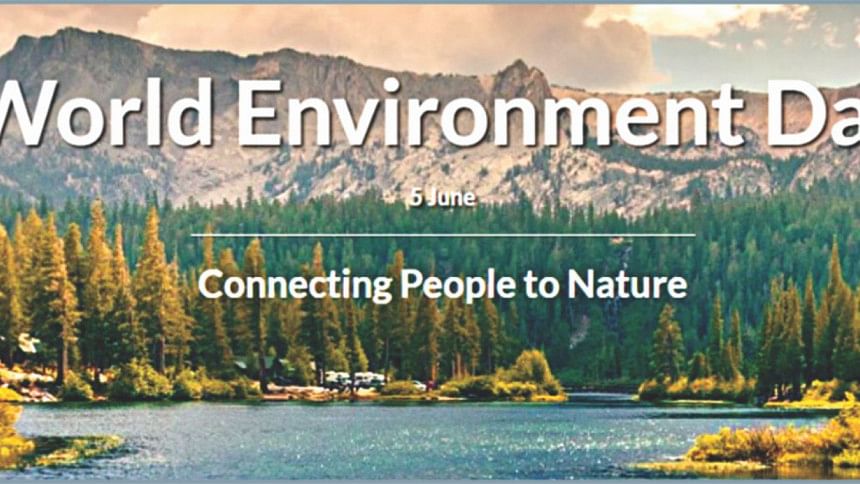Conservation of ECAs

The Ecologically Critical Area (ECA) is an environmentally protected zone where the ecosystem is considered to be endangered to reach a critical condition by the changes brought through various human activities. Section 2(gg) of the Bangladesh Environment Conservation (Amendment) Act (2010) provides that “Ecologically critical Area” means such area which is rich in unique biodiversity or due to the importance of environmental perspective necessary to protect or conserve from destructive activities. ECA also falls within the category of natural and cultural heritage.
The Government of Bangladesh has declared eight areas as ECAs in 1999, e.g. Cox's Bazar and Teknaf Peninsula, St. Martin's Island, Sonadia Island, Hakaluki Haor, Tanguar Haor and Marjat Baor, Gulshan-Baridhara Lake and Sundarbans. Subsequently in 2009, four rivers (e.g. Buriganga, Sitalakhya, Balu and Turag) around Dhaka city were declared as ECAs.
Bangladesh is a signatory to the Ramsar Convention (1971) and the World Heritage Convention (1972) which are the principal instruments ensuring the conservation of natural heritages worldwide. The principal legislations that safeguard ECAs in Bangladesh are the Environment Conservation Act (1995), Environment Conservation Rules (1997), and the Constitution of Bangladesh.
The Act of 1995 in its section 5(1) contains provisions regarding declaration of ECA by the DG of the Department of Environment (DoE), which provides that if the Government is satisfied that, an area is in an environmentally critical situation or is threatened to be in such situation, the Government may declare such area as an ECA. Sub-section (2) also points out that, the Government shall under sub-section (1), specify the activities or processes that cannot be initiated or continued in an ECA. The Act also confers power to DoE to order corrective steps to be taken by any person believed to be responsible directly or indirectly, for causing harm to the ecosystem. Again, Rule 3(1) of the Rule of 1997 states that, the Government shall take the following factors into consideration while declaring any area as ECA under section 5(1) of the Act: (a) human habitat; (b) ancient monument; (c) archeological site; (d) forest sanctuary; (e) national park; (f) game reserve; (g) wild animals habitat; (h) wetland; (i) mangrove; (j) forest area; (k) bio-diversity of the relevant area; and (l) Other relevant factors. Furthermore, Article 18A of the Bangladesh Constitution contains provisions regarding the protection and improvement of environment and biodiversity and states that, the State shall endeavour to protect and improve the environment and to preserve and safeguard the natural resources, bio-diversity, wetlands, forests and wild life for the present and future citizens.
The significance of conserving the ECAs has been hailed by few esteemed decisions of the Bangladesh Supreme Court. Thus two PIL were lodged before the HCD by BELA seeking directives of concern authorities to undertake special measures to protect the Sonadia Island and Sundarbans Mangrove forest as ECAs in (1) BELA v Ministry of Land and Others (Writ Petition No. 4286 of 2003); and (2) BELA v Bangladesh and Others (Writ Petition No. 2224 of 2004) respectively. In the earlier case, the petition was moved by BELA seeking protective measures to conserve Sonadia Island as an ECA. The petition argued that the declaration of Sonadia Island as an ECA establishes the fact that the mangrove forest of the said land has a special ecological significance. Upon hearing the petition, the HCD issued a Rule Nisi calling upon the respondents to show cause as to why they should not be directed to undertake protective measures as required under section 5 of the Act to conserve Sonadia Island as an ECA.
The key aim of conserving ECAs is to protect the major environmental features from encroachment by skewered development. ECAs perform numerous key environmental functions and provide desirable green space to enhance urban aesthetics. With constant environmental degradation in Bangladesh, the amount and area of ECA is still increasing. Despite a large number of ecosystems in Bangladesh could perfectly be described as 'threatened', it is quite impossible for the government to find out, declare and manage all of them as ECAs. However, the DoE is implementing co-management system for conserving the ECAs and necessary rules are being framed to regulate different activities contrary to the conservation of ECAs in Bangladesh.
The writer is an Advocate, Supreme Court of Bangladesh.

 For all latest news, follow The Daily Star's Google News channel.
For all latest news, follow The Daily Star's Google News channel. 



Comments